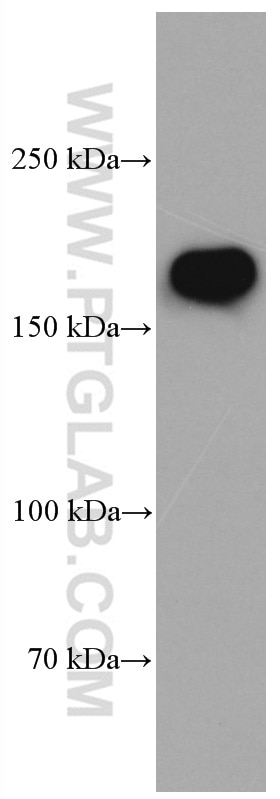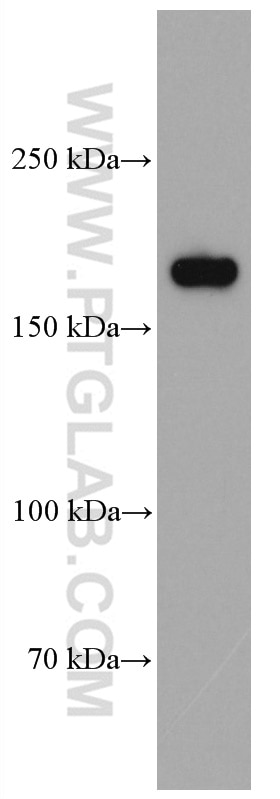Product Information
66565-1-PBS targets NMDAR2B/GRIN2B in WB, Indirect ELISA applications and shows reactivity with Human, Mouse, Rat samples.
| Tested Reactivity | Human, Mouse, Rat |
| Host / Isotype | Mouse / IgG1 |
| Class | Monoclonal |
| Type | Antibody |
| Immunogen |
CatNo: Ag16718 Product name: Recombinant human GRIN2B protein Source: e coli.-derived, PET28a Tag: 6*His Domain: 1133-1485 aa of BC113620 Sequence: YLDQFRTKENSPHWEHVDLTDIYKERSDDFKRDSVSGGGPCTNRSHIKHGTGDKHGVVSGVPAPWEKNLTNVEWEDRSGGNFCRSCPSKLHNYSTTVTGQNSGRQACIRCEACKKAGNLYDISEDNSLQELDQPAAPVAVTSNASTTKYPQSPTNSKAQKKNRNKLRRQHSYDTFVDLQKEEAALAPRSVSLKDKGRFMDGSPYAHMFEMSAGESTFANNKSSVPTAGHHHHNNPGGGYMLSKSLYPDRVTQNPFIPTFGDDQCLLHGSKSYFFRQPTVAGASKARPDFRALVTNKPVVSALHGAVPARFQKDICIGNQSNPCVPNNKNPRAFNGSSNGHVYEKLSSIESDV Predict reactive species |
| Full Name | glutamate receptor, ionotropic, N-methyl D-aspartate 2B |
| Calculated Molecular Weight | 1484 aa, 166 kDa |
| Observed Molecular Weight | 166 kDa |
| GenBank Accession Number | BC113620 |
| Gene Symbol | GRIN2B |
| Gene ID (NCBI) | 2904 |
| RRID | AB_2881926 |
| Conjugate | Unconjugated |
| Form | Liquid |
| Purification Method | Protein G purification |
| UNIPROT ID | Q13224 |
| Storage Buffer | PBS only, pH 7.3. |
| Storage Conditions | Store at -80°C. |
Background Information
GRIN2B (also known as GluN2B or NMDAR2B) is a member of the N-methyl-D-aspartate (NMDA) receptor family within the ionotropic glutamate receptor superfamily. NMDA receptors are widely expressed in the central nervous system and play a major role in excitatory synaptic transmission and plasticity (PMID: 23223336). NMDA receptors large multi-subunit complexes arranged into heteromeric assemblies composed of four homologous subunits within a repertoire of over 10 different subunits: eight GluN1 isoforms, four GluN2 subunits (A-D) and two GluN3 subunits (A and B) (PMID: 21395862). Naturally occurring mutations within GRIN2B gene are associated with neurodevelopmental disorders including autism spectrum disorder, attention deficit hyperactivity disorder, epilepsy, and schizophrenia.






